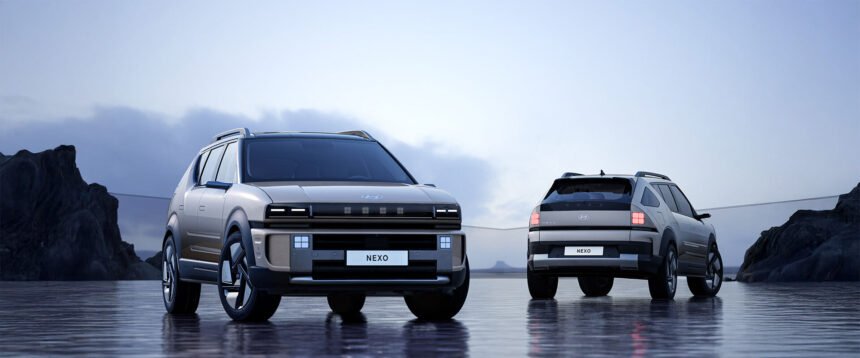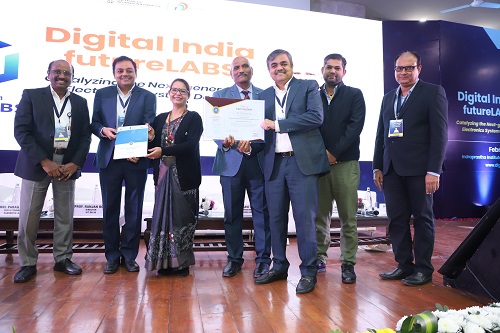Pune, August 2025 — The automotive landscape in India is on the cusp of a major shift. While electric vehicles have dominated recent headlines, Hyundai has quietly been preparing to introduce its hydrogen fuel-cell SUV—a vehicle that promises zero emissions, fast refueling, and long-range travel. As the first-of-its-kind in the country, this SUV represents more than just a tech marvel. It’s a bold statement about India’s potential to adopt cleaner, greener, next-generation mobility.
What Is Hydrogen Fuel-Cell Technology?
Unlike battery-electric vehicles that store electricity, fuel-cell vehicles generate electricity onboard by combining hydrogen with oxygen in a chemical reaction—producing only water vapor. Here’s why this matters:
- Zero tailpipe emissions: No CO₂, no harmful particulates.
- Rapid refueling: Comparable to gasoline—just 5–7 minutes.
- Extended driving range: Around 600 km per fill-up.
- Powerful performance: Electric torque and instant throttle response, without battery degradation.
That makes hydrogen a clean, convenient alternative to traditional EVs—if the infrastructure and costs align.
Hyundai’s First Hydrogen SUV: What Sets It Apart
Hyundai’s fuel-cell SUV has been road-tested in Europe and the U.S., but 2025 marks its Indian debut. Here’s the lowdown:
- Design: Looks rugged and modern—with a bold grille, high ground clearance, and aerodynamic lines. It’s instantly recognizable as a high-tech SUV.
- Powertrain: A 136 kW fuel-cell stack paired with a 60 kWh battery for performance and energy recovery. Combined power output is around 150 kW.
- Range: Official testing puts it at 600 km per tank—ideal for highway journeys and long commutes.
- Interior: Spacious, minimalist cabin with digital displays highlighting hydrogen levels and efficiency stats. Leather seats, panoramic sunroof, and premium audio make it a comfortable daily driver.
- Safety: Reinforced tank housing, multiple hydrogen sensors, and automatic shut-off mechanisms ensure reliable safety standards.
This isn’t a prototype—it’s a production-ready SUV that’s quietly readying for Indian roads.
Why Now? Hyundai’s Timing and Strategy
Hyundai’s hydrogen SUV arrives in India at a strategic moment:
- EV Saturation: Battery-electric vehicles are gaining ground, but charging speed, range anxiety, and recyclability remain concerns.
- Government Focus: The Indian government has introduced hydrogen fuel policies—the National Hydrogen Mission outlines incentives for both vehicle makers and infrastructure development.
- Commercial Pilot Program: Hyundai is launching small-scale fleets for public transport and corporate use in Pune and Delhi, testing commercial viability before private launches.
- Global Mandates: With several European nations targeting hydrogen vehicles in public transport, Hyundai aims to mirror that momentum in India.
It’s a smart, phased introduction: first fleets, then early adopters, and eventually volume models if everything clicks.
The Infrastructure Challenge: Catalyst for Change
For hydrogen vehicles to take off, India needs a robust refueling network—but infrastructure is just beginning:
- Hyundai, ONGC, & Tata Power Pilot Camps: Plans are in place to establish 8–10 hydrogen fueling stations across Pune, Mumbai, Delhi, and Bangalore by 2026.
- Highway Corridor Priority: New pumps will focus on highways—crucial for enabling 600 km driving range.
- Mobile Refueling Units: Portable trailers that can service fleets or large clients until fixed pumps arrive.
- Production at Scale: Green hydrogen generated via solar/wind electrolysis will be prioritized to ensure the fuel remains truly clean.
If the ecosystem is activated quickly, Hyundai’s SUV could escape niche status.
Driving Experience: What It Feels Like on the Road
Engineers and test drivers describe driving the hydrogen SUV as Enzo Ferrari meets zero emissions:
- Instant power: Electric motors provide strong pickup up to 100 km/h—merging onto highways is effortless.
- Silent cabin: Missing diesel rumble, replaced by a serene hum that elevates long drives.
- Linear handling: Low center of gravity from the battery stack ensures stable cornering despite SUV height.
- Refuel ease: The hydrogen nozzle clicks into place—5 minutes later, you’re ready to roll again.
Unlike fast-charging BEVs that require 30+ minutes, hydrogen feels similar to refueling at a petrol station.
Environmental Edge: Greener Than Green
From a carbon standpoint, hydrogen provides significant advantages:
- Zero local emissions: No CO₂, NOx, or particulate matter released from the tailpipe.
- Green hydrogen use: By 2026, Hyundai aims to source renewable hydrogen—produced via solar and wind-powered electrolysis.
- Circular energy potential: Hydrogen systems can integrate with energy storage, helping stabilize the grid using excess solar power.
This makes the SUV a credible EV alternative—especially for drivers who need long range with fast refueling and eco-conscious credentials.
Cost Considerations: Beyond the Sticker Price
The hydrogen SUV will start in the ₹80–90 lakh bracket, but a detailed look reveals its viability:
- Fuel cost: Hydrogen is currently more expensive per kg than petrol, but hydrocarbon taxes and subsidies may narrow the pricing gap over time.
- Lease vs. Ownership: Hyundai plans leasing programs for businesses and public fleets to reduce entry costs.
- Maintenance: Fuel-cell vehicles have fewer moving parts than ICEs, with lower long-term maintenance needs.
- Runway to Cost Parity: As station rollout expands and economies of scale kick in, prices are expected to drop toward ₹60 lakh—still premium, but increasingly accessible.
Market Impact: Disruption and Competition
Hyundai’s bold move could shake up the Indian auto market:
- Policy ripple: Taiwan, EU, and India are racing to support hydrogen energy—with Hyundai as a test case, policies are likely to strengthen.
- Competition will follow: Global players like Toyota and local firms like Tata Motors are already studying fuel-cell viability. Hyundai’s SUV could kickstart a hydrogen arms race.
- Consumer awareness: Fleet test-drives will demonstrate hydrogen firsthand to regulators, fleet managers, and early adopters—triggering market sentiment shift.
Use-Case Highlight: First Responder & Fleet Advantage
Beyond taxis and private buyers, strategic applications will drive hydrogen adoption:
- Public transport: Pune’s electric buses have come and gone—but the hydrogen SUV offers rural reach and fast filling for regional routes.
- First responder vehicles: Police, ambulances, and fire units benefit from fast refueling and zero emissions—critical for towns and national highways.
- Luxury fleet: Corporate hotels and tour services could use hydrogen SUVs to promote next-gen green mobility in high-margin fleets.
These fleets will help normalize hydrogen operations, build service support, and demonstrate feasibility.
What’s Next: Roadmap to Mainstream
If all goes well, Hyundai’s fuel-cell SUV could enter the public market by late 2026. Before that, key milestones include:
- Completion of 10 pilot stations by mid-2026
- First fleet deliveries to corporate or government use by end of 2025
- Customer test drives and early adopter pre-orders in late 2025
- Green hydrogen supply scaling via utility partnerships
- Government incentives to reduce cost and increase access
If this roadmap plays out, India could leapfrog from early EV mass-marketables to clean hydrogen ecosystems—and lead by example.
Hyundai’s hydrogen SUV isn’t just another mobility product—it’s a bet on a cleaner, smarter automotive future. It showcases that the EV market isn’t the endgame. The next frontier is about zero-emission convenience—offering quick refuels, long ranges, and green tech that’s ready now.
For India, this could be the breakthrough that genuinely changes how we electrify mobility—making it sustainable, fast, and future-ready.
If you’re ready to test-drive the future, this is your first chance to experience hydrogen-powered clean-tech on Indian roads.
1: When will Hyundai launch the hydrogen SUV in India?
Hyundai is expected to officially launch its hydrogen fuel-cell SUV in India by late 2025, starting with fleet programs and limited public availability in cities like Pune, Mumbai, and Delhi. Test vehicles have already been spotted in pilot programs, and customer bookings may open in early 2026 if infrastructure plans move ahead as scheduled.
2: What is the range of Hyundai’s hydrogen SUV on a full tank?
Hyundai’s hydrogen SUV offers a real-world driving range of around 600 kilometers on a single tank. That puts it on par with many petrol-powered SUVs and significantly ahead of most battery-electric vehicles (EVs) when it comes to long-distance travel without range anxiety.
3: How long does it take to refuel the hydrogen SUV?
Refueling takes just 5 to 7 minutes, similar to filling a petrol or diesel vehicle. This is one of hydrogen’s biggest advantages over battery EVs, which often require 30 minutes or more at fast-charging stations.
4: Is hydrogen fuel safe to use in passenger vehicles?
Yes, absolutely. Hyundai’s fuel-cell SUV comes with multiple safety layers, including pressure-regulated tanks, hydrogen leak sensors, and auto shut-off systems. Globally, fuel-cell vehicles have a proven safety track record and are used even in public transport in countries like South Korea, Germany, and Japan.
5: Will the hydrogen SUV be expensive to maintain?
Not necessarily. Unlike traditional engines, hydrogen fuel cells have fewer moving parts and don’t need oil changes or complex mechanical servicing. Maintenance is generally lower than ICE (internal combustion engine) vehicles, though initial service availability may be limited until more hydrogen vehicles hit the roads.
“Exciting News! Sejal News Network is now on WhatsApp Channels
Subscribe today by clicking the link and stay updated with the latest news!” Click Here
Our App : Click Here



